On warm days in late spring and summer, the sweet scent of stacks of freshly cut timber lures longhorn beetles into the open. These fabulous-looking insects – a treat for entomologists, but a potential pest for foresters – are searching for places to meet partners and lay their eggs.
For one or maybe two years, the beetle grubs have fattened up in woody tunnels, chewing the timber with powerful jaws. Some will have emerged as adults last autumn, hibernating over winter. Now the spring sunshine tempts them out.
How to find and record longhorn beetles:
A good place to start your quest is a sun- warmed logpile or stump, where you may well see a wasp beetle moving jerkily over the cut ends. It’s a plentiful species, but keep an eye out for its rarer relatives, such as the tanbark borer or the Welsh oak longhorn.
Look for exit holes where adults have emerged from trees or logs, then search the area carefully for sheltering adults. And check your log basket! Some longhorns may emerge from fireside logs into living rooms.
Many of these beetles feed at flowers: the black and yellow longhorn loves hogweed nectar, for instance. Scan blossoming hawthorn trees for two-banded, rufous-shouldered and black- spotted longhorns.
Try going out at night. Many beetles (not just longhorns) are at large after sundown. A torch-lit all in the woods can be a revelation.
There is a Longhorn Beetle Recording Scheme in place to encourage recording of this group and to manage the records, to find out more on the UK Beetle Recording website.
More insect identification guides:
How to identify longhorn beetles
Black and yellow longhorn (Rutpela maculata)
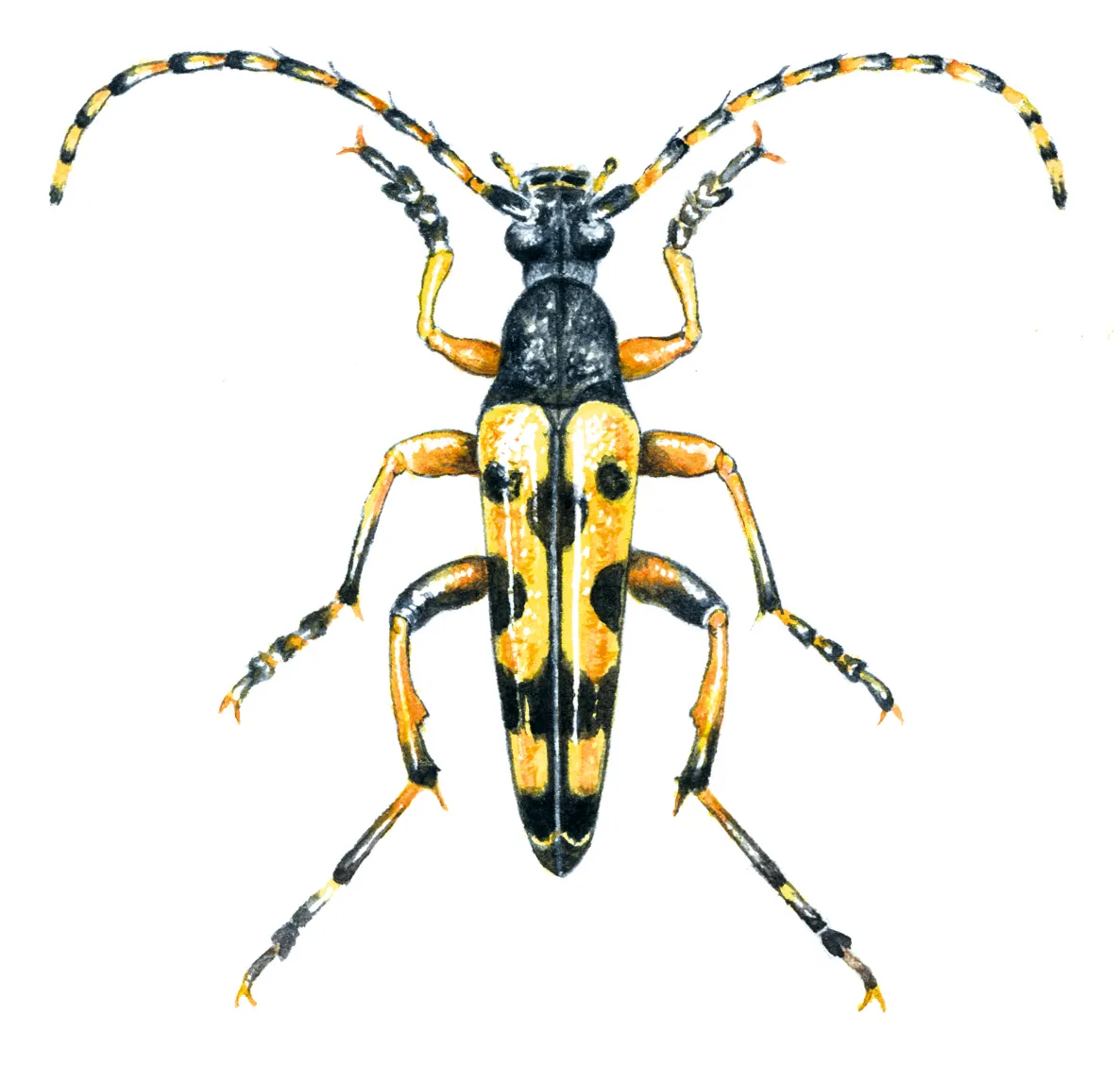
13–20mm. Slow-moving wasp mimic. Visits wood and hedgerow flowers.
Wasp beetle (Clytus arietis)

6–15mm. Abundant, fast-moving wasp mimic. Frequently basks on sunlit logpiles, stumps and leaves.
Two-banded longhorn (Rhagium bifasciatum)
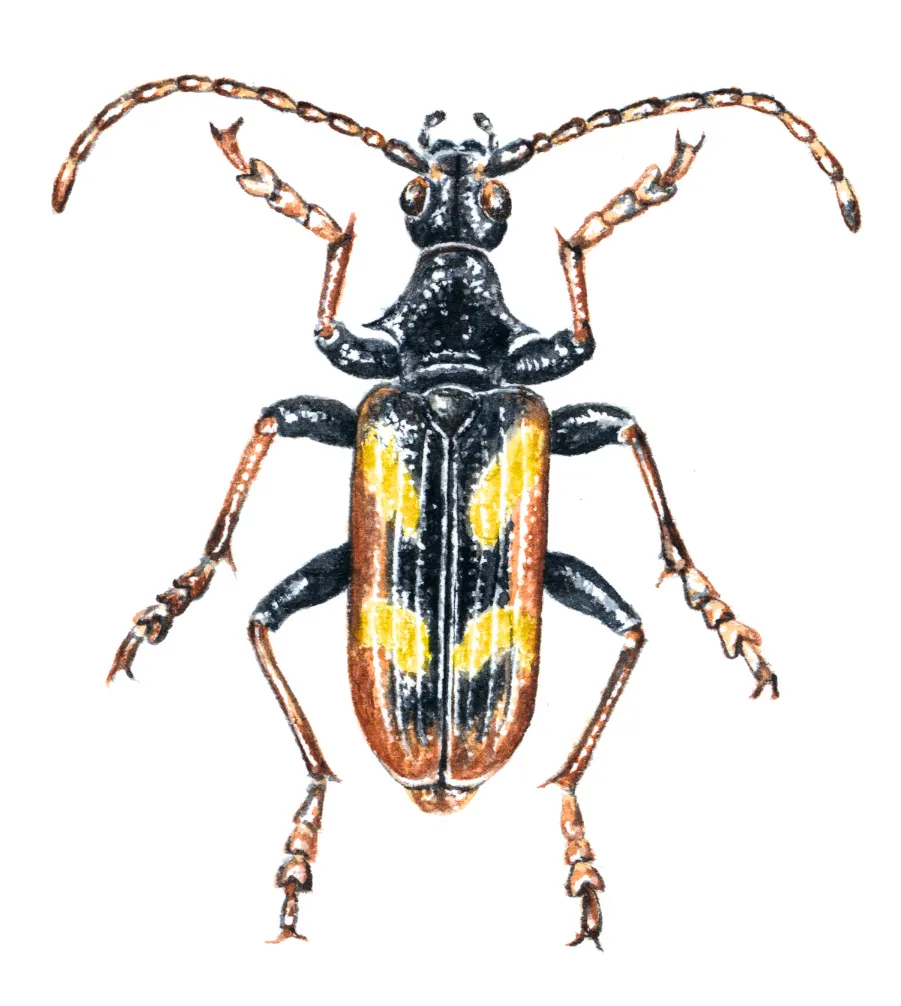
12–22mm. Deciduous or coniferous woodland, often visiting flowers such as hawthorn or bramble.
Black-spotted longhorn (Rhagium mordax)
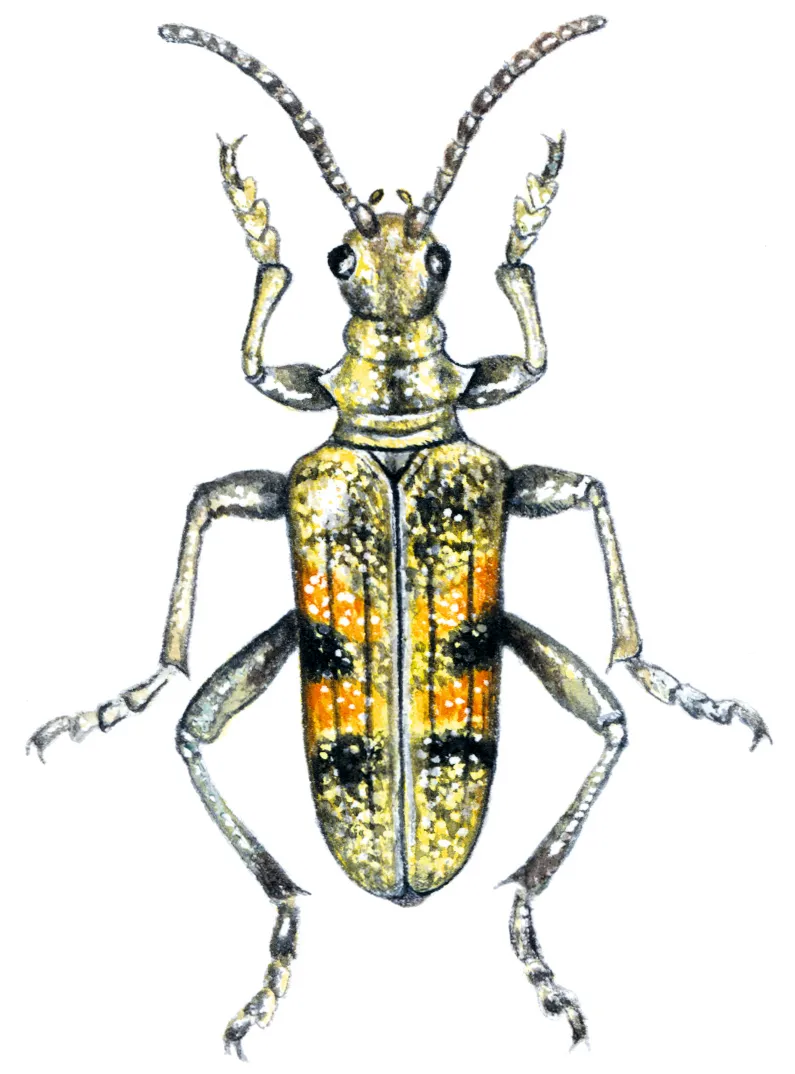
13–23mm. Deciduous or mixed woods, often on hawthorn blossom. Can be very approachable.
Welsh oak longhorn (Pyrrhidium sanguineum)

6–15mm. Rare and local in southern oak woods; reported most often from stacks of newly cut oak.
Rufous-shouldered longhorn (Anaglyptus mysticus)
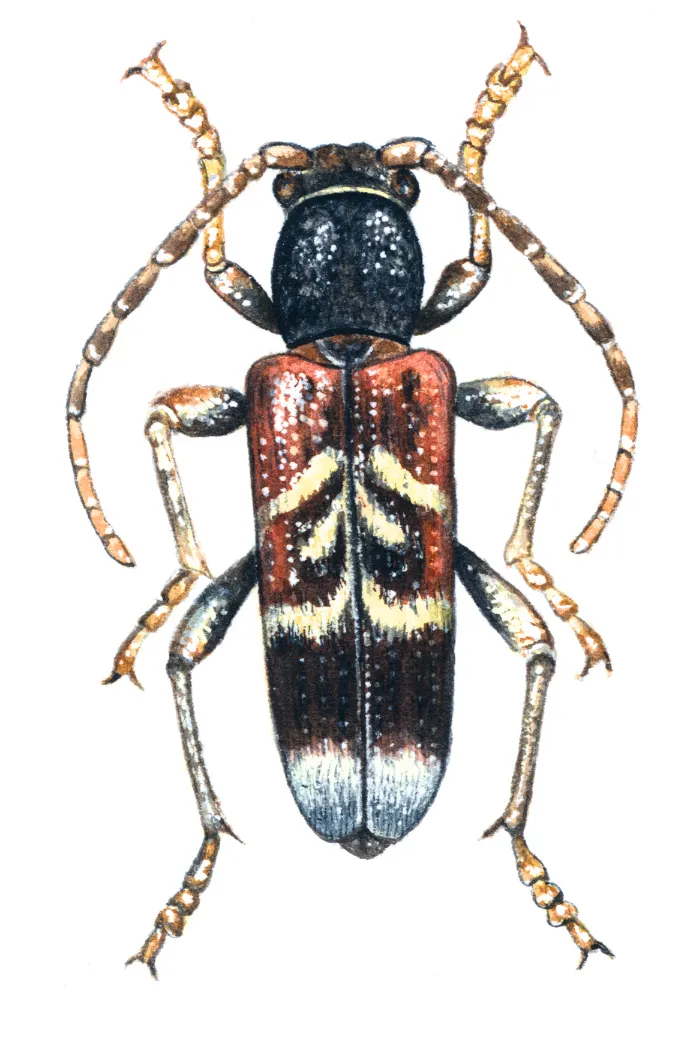
8–15mm. Woodland clearings and hedges; visits hawthorn blossom.
Tanbark borer (Phymatodes testaceus)
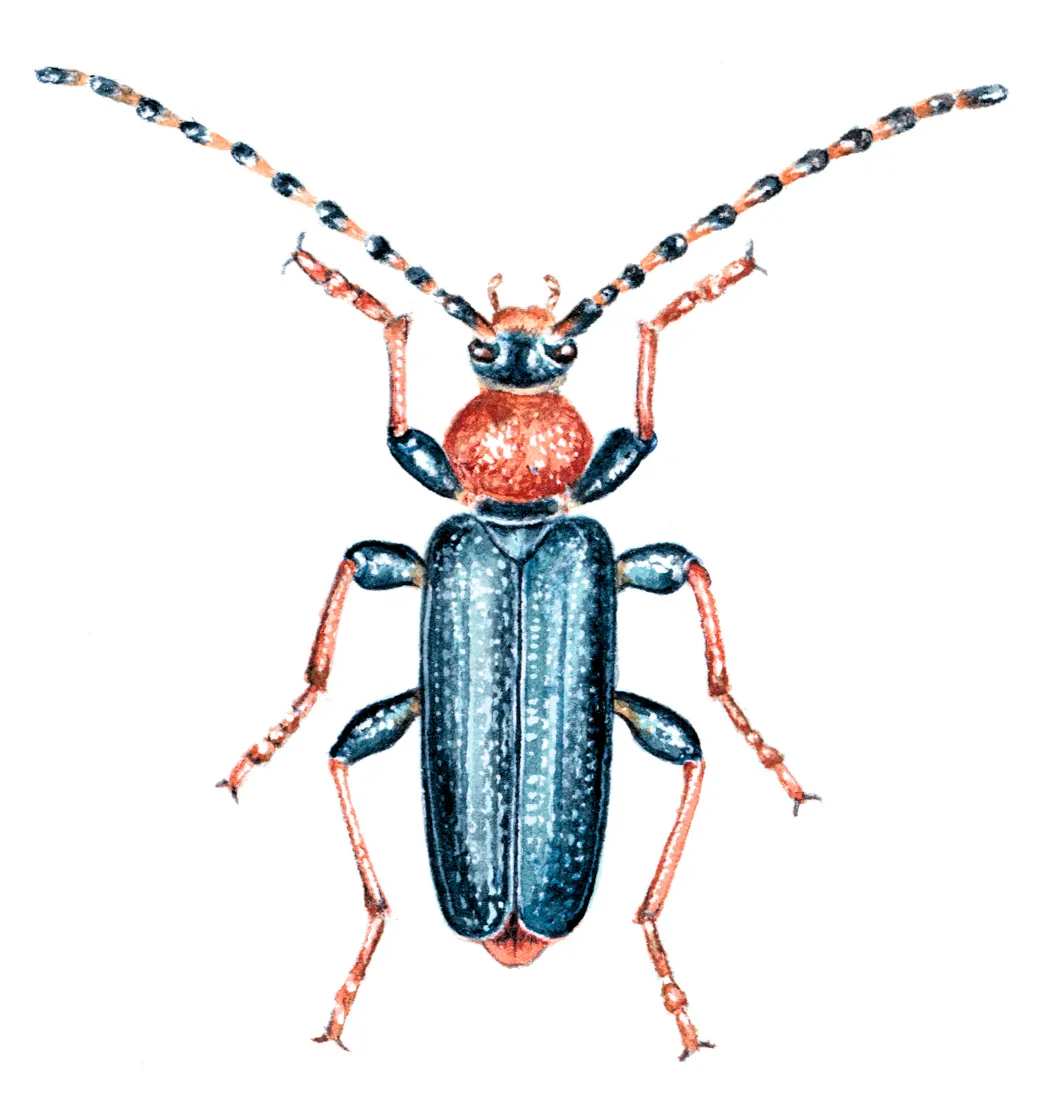
6–18mm. Parks and open woods. Feeds on oak, especially in logpiles; often attracted to lighted windows.
Lesser thorn-tipped longhorn (Pogonocherus hispidus)
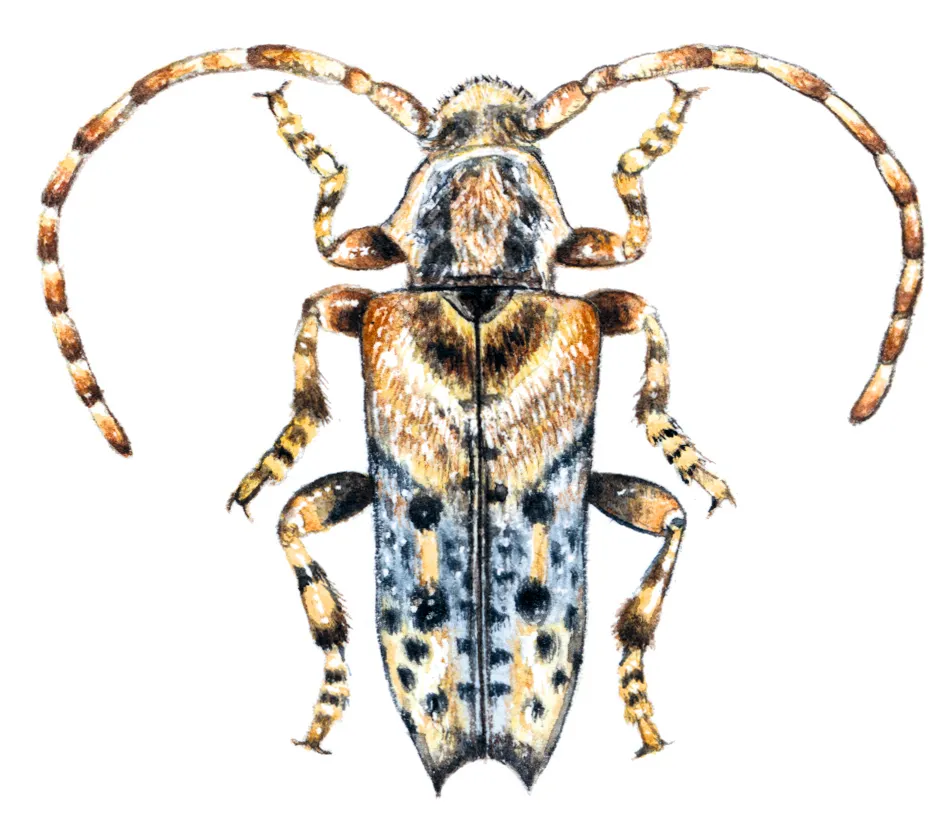
4–6mm. Usually on holly or ivy. Very small and hard to spot against bark.
Small poplar-borer (Saperda populnea)
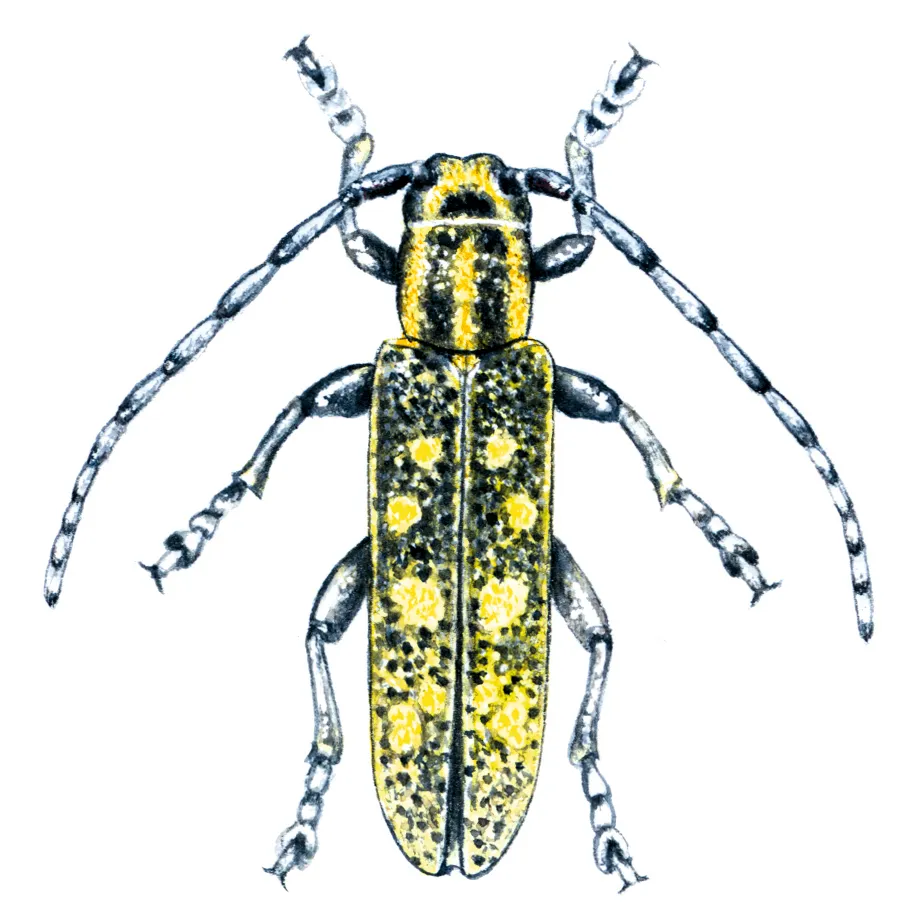
9–15mm. On aspen or poplars. Basks on bark of mature trees or nearby vegetation.
Black-striped longhorn (Stenurella melanura)
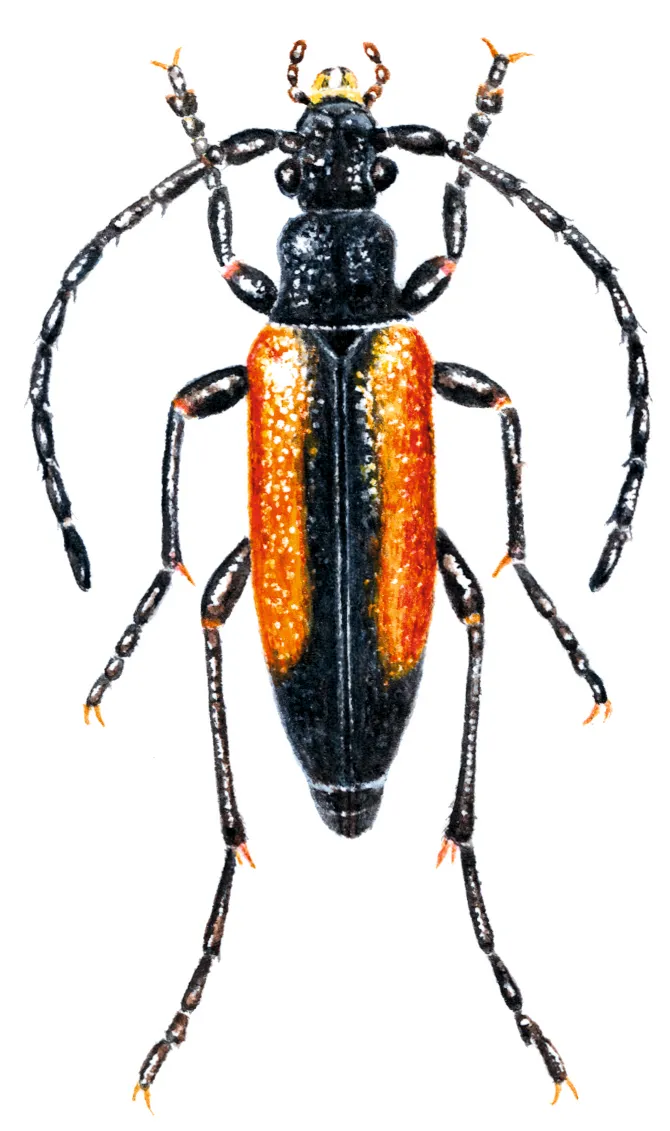
6–10mm. Open woodland; feeds on flowers in clearings. Male has less extensive black on wing-cases.
Larch longhorn (Tetropium gabrieli)

8–18mm. Confined to larch woods; not often seen by day. Look for it on larch stumps or bark in evening.
Pine-stump borer (Asemum striatum)
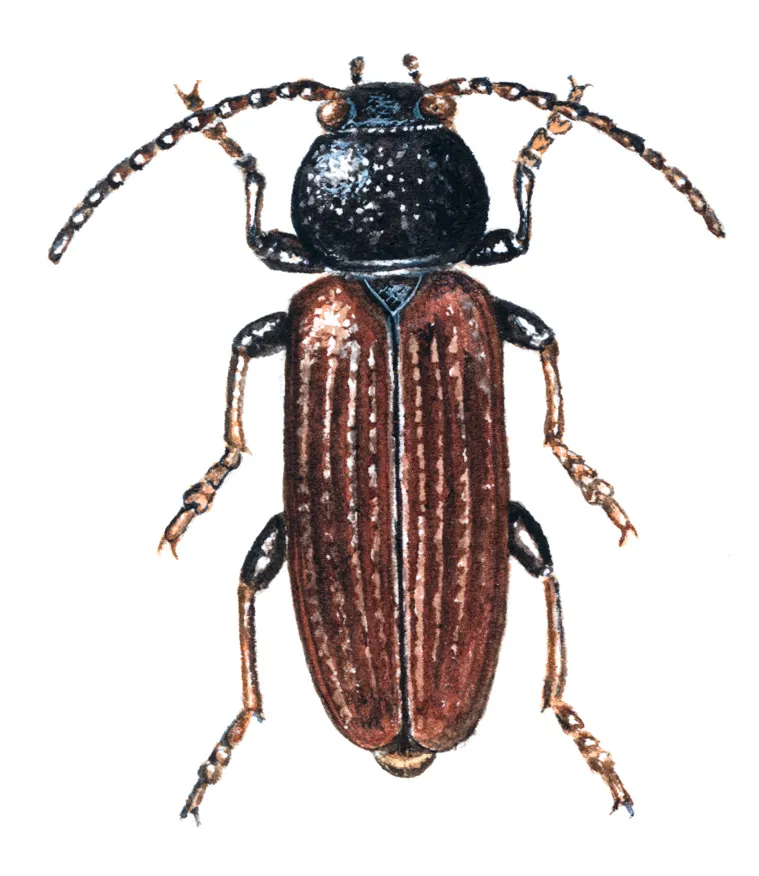
8–23mm. Coniferous woodland, especially in Scotland. Search for it on dead conifer stumps at dusk.
Main image: Wasp beetle on a dandelion. © Minh Hoang Cong/500px/Getty
All illustrations by Felicity Rose Cole
